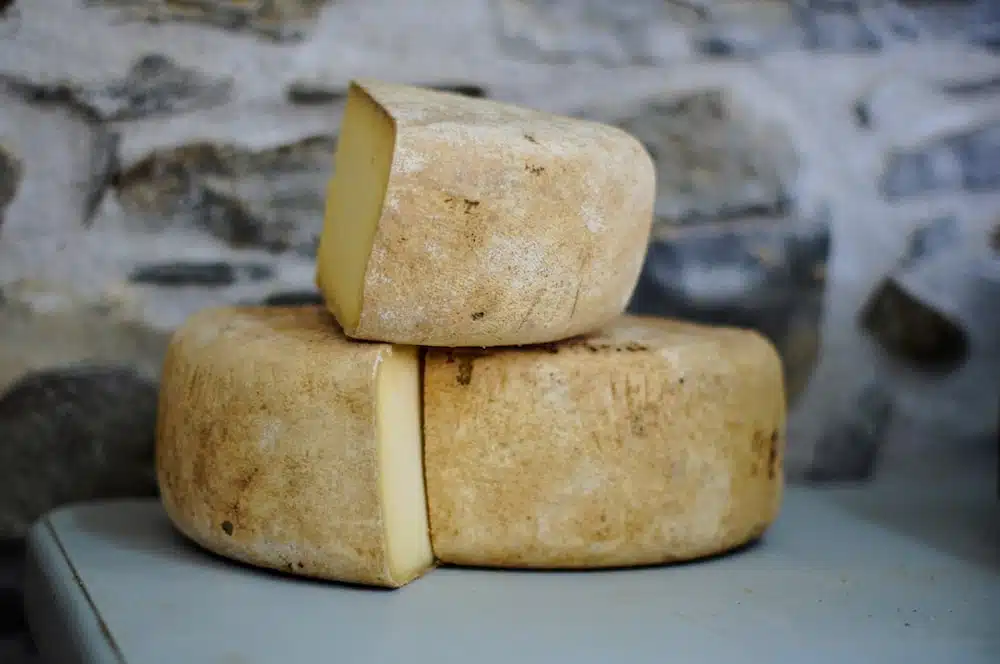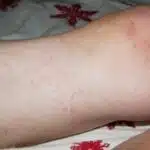As a laundry care expert, I understand the frustration of discovering cream cheese stains on clothing. Whether it’s from a bagel breakfast or a cheesy dip mishap, these stains can be stubborn and difficult to remove. However, fear not – with the right techniques and products, you can successfully remove cream cheese stains from your clothes without causing any damage.
It is important to act fast when dealing with cream cheese stains, as they can quickly set into the fabric and become more challenging to remove. In this article, we will explore various methods for removing cream cheese stains from different types of fabrics. By following these tips and tricks, you can save your favorite clothing items from permanent staining and extend their lifespan.
Understanding Cream Cheese Stains
Cream cheese is a delicious spread that can add flavor and texture to any dish. However, it can also cause stubborn stains on clothing, which can be difficult to remove. Understanding the causes of cream cheese stains is crucial in preventing them from occurring in the first place.
One of the main reasons why cream cheese stains are so tough to remove is because of their composition. Cream cheese contains fat, protein, and other substances that make it stick to fabric fibers. Additionally, if left untreated for too long, cream cheese stains can set into the fabric and become even harder to remove.
To prevent cream cheese stains from occurring, it’s important to take precautions when handling this spread. One way to do this is by wearing an apron or protective clothing when cooking with cream cheese. You can also try using utensils instead of your hands to handle the spread, as this will minimize contact with your clothes. By taking these small steps, you can reduce the likelihood of getting cream cheese stains on your clothing and save yourself some hassle down the line.
To ensure that cream cheese stains don’t ruin your favorite clothes, it’s important to act fast when they occur. In the next section, we’ll explore some tips and tricks for removing these pesky stains before they have a chance to set in and become permanent.
Acting Fast To Prevent Stains From Setting
Quick stain removal techniques are crucial for preserving the quality and appearance of your favorite clothing items. When it comes to removing cream cheese stains from clothes, time is of the essence. The longer the stain sets, the harder it becomes to remove. Therefore, acting fast is essential to prevent stains from setting.
The first step in preventing a cream cheese stain from setting is to blot away as much of the excess as possible with a clean cloth or paper towel. Avoid rubbing the stain as this can push it deeper into the fabric fibers and cause permanent damage. Once you have removed as much of the excess residue as possible, rinse the area under cold running water.
Another quick stain removal technique that works wonders on cream cheese stains is to apply a small amount of laundry detergent directly onto the affected area. Gently rub in circular motions using your fingers or a soft-bristled brush until you notice the stain starting to lift. Rinse thoroughly under cold running water and repeat these steps until no more residue remains.
Proper cleaning techniques are essential when it comes to removing stubborn stains like cream cheese from clothes. Remember never to use hot water, as this can set the stain permanently into the fabric fibers. It’s also important to avoid using bleach or other harsh chemicals that can damage delicate fabrics and cause discoloration over time.
Assessing the fabric type is an important step in determining how best to clean your clothing item without causing any further damage. In many cases, you may be able to remove stubborn stains like cream cheese using simple techniques like those mentioned above. However, if you’re dealing with delicate fabrics or heavily soiled garments, it’s always best to seek professional help from a trusted dry cleaner or laundry care expert who can provide specialized cleaning services tailored to your specific needs and budget.
Assessing The Fabric Type
Acting fast to prevent stains from setting is crucial. However, it is equally important to assess the fabric type before attempting to remove the stain. Different fabrics require different treatment depending on their durability and blend composition. Assessing these factors will help determine the best approach to take in removing cream cheese stains from clothes.
Firstly, assessing fabric durability is essential because some materials are more delicate than others. For instance, silk and woolen garments require a gentle approach when removing stains as they are more prone to damage than cotton or polyester materials. Applying too much pressure or using harsh chemicals can cause these fabrics to weaken and eventually tear. Therefore, it is necessary to handle each garment with care based on its durability.
Secondly, identifying fabric blends is another critical aspect of assessing the fabric type before treating a stain. This information helps determine which cleaning solution or method will work best without compromising the integrity of the garment. For example, if the clothing item has a blend of cotton and spandex, a gentler stain-removing method should be used as spandex can lose its elasticity when exposed to harsh chemicals.
In conclusion, assessing fabric durability and identifying fabric blends are essential steps in removing cream cheese stains from clothes effectively. By taking into account these factors beforehand, one can avoid damaging the garment while ensuring that the stain is removed completely. The next step involves pre-treating the stain before washing it off thoroughly; this process will be discussed in detail in the subsequent section.
Pre-Treating The Stain
Pre-treating the stain is an essential step in removing cream cheese stains from clothes. By doing so, you can loosen and remove as much of the stain as possible before washing. There are several pre-treating methods to choose from, including using a stain remover, rubbing alcohol, or white vinegar.
One effective pre-treating method is to apply a small amount of stain remover directly onto the affected area and let it sit for 5-10 minutes. Then, wash the garment as usual with warm water and detergent. If you don’t have a stain remover on hand, rubbing alcohol could also do the trick. Simply dampen a clean cloth with rubbing alcohol and dab it onto the stained area until the stain begins to fade.
Another option is to use white vinegar. Mix equal parts of white vinegar and water in a spray bottle and apply it onto the affected area. Let it sit for 15-20 minutes before washing with warm water and detergent. This method works well for both fresh and set-in stains.
By utilizing these pre-treating methods, you can increase your chances of successfully removing cream cheese stains from your clothes. However, if the stain persists after pre-treating, don’t worry – there are still other stain removal techniques to try out in order to restore your garment back to its original state.
Transitioning into the next section about ‘using dish soap and water’: Using dish soap and water is another effective technique for removing stubborn cream cheese stains that have not been completely removed through pre-treating methods alone.
Using Dish Soap And Water
According to a recent survey, more than 50% of people have encountered stains on their clothes caused by cream cheese. The creamy texture of this spread can make it difficult to remove from fabrics, especially if not treated properly. Fortunately, there are effective ways to get rid of these unsightly marks.
Removing grease stains requires a different approach than other types of stains. Dish soap and water can be an effective method for removing cream cheese stains from clothes. First, apply a small amount of dish soap directly onto the stain and rub gently with a clean cloth or sponge. Then rinse the area with warm water until the soap is removed. Repeat this process until the stain fades away.
Using natural remedies is also a great option for those who prefer eco-friendly solutions. One effective way to remove cream cheese stains is by mixing equal parts white vinegar and water in a spray bottle. Spray the solution onto the affected area and let it sit for about 10 minutes before washing as usual. Another option is to use lemon juice instead of vinegar, which has natural bleaching properties that can help remove stubborn stains.
Transition: Now that we have covered how to remove cream cheese stains using dish soap and water, let’s move on to another effective method – applying vinegar or lemon juice for optimal results.
Applying Vinegar Or Lemon Juice
After using dish soap and water to remove cream cheese stains from clothes, the next effective solution is cleaning with vinegar. Vinegar is a natural stain remover that can easily get rid of stubborn stains on fabric. When using vinegar to clean cream cheese stains, mix equal parts of vinegar and water in a spray bottle and apply the mixture directly to the stained area.
After spraying the stain with vinegar solution, allow it to sit for about 10 minutes before washing as usual. For tough stains, you may need to repeat the process a few times before seeing results. Vinegar is a natural alternative to harsh chemicals that can damage clothes or irritate sensitive skin.
Aside from vinegar, there are other natural stain removers that can be used for removing cream cheese stains from clothes such as lemon juice or baking soda. These alternatives are also safe for use on various types of fabric and do not contain harmful chemicals that can harm your health or damage your clothes. However, when using these alternatives, it’s important to spot test first before applying on the entire stained area.
3 Natural Stain Removers:
- Lemon Juice: This acidic liquid is effective in breaking down protein-based stains like cream cheese.
- Baking Soda: This versatile powder has abrasive properties that help lift off dirt and grime from fabric fibers.
- Salt: A common household ingredient that acts as an absorbent for liquid spills and also helps to loosen up stubborn stains.
Utilizing baking soda or cornstarch can be another effective method for removing cream cheese stains from clothes. These absorbent powders work by drawing out moisture and lifting off the stain particles from the fabric fibers. Simply sprinkle some baking soda or cornstarch onto the stained area and let it sit for at least 30 minutes before brushing off excess powder and washing as usual. With these natural stain removers, you can keep your clothes looking new without exposing yourself to harsh chemicals.
Utilizing Baking Soda Or Cornstarch
When it comes to removing cream cheese stains from clothes, baking soda and cornstarch are two alternative methods that you can use. These common household items work by absorbing the oils and fats in the stain, making it easier to remove. Both are cost-effective and can be found in most grocery stores.
To use baking soda or cornstarch for removing cream cheese stains, start by blotting the excess stain with a clean cloth or paper towel. Then sprinkle a generous amount of either baking soda or cornstarch over the affected area, making sure that the entire stain is covered. Leave it to sit for at least 30 minutes or overnight for best results. Once the time has passed, shake off any excess powder and wash the garment as usual.
While both methods are effective in removing cream cheese stains from clothes, there are some differences between them. Baking soda is slightly more abrasive than cornstarch, which may cause damage to delicate fabrics if used excessively. On the other hand, cornstarch may leave a white residue on darker fabrics if not removed properly. Therefore, it’s important to choose the right method based on your fabric type and personal preference.
| Pros of Using Baking Soda | Cons of Using Baking Soda |
|---|---|
| Absorbs oil-based stains effectively | Can be abrasive on delicate fabrics |
| Cost-effective and readily available | May leave a white residue if not removed properly |
In conclusion, utilizing baking soda or cornstarch is an effective way of removing cream cheese stains from clothes. While both methods work well, there are some differences between them that you should consider before deciding which one to use. By comparing their effectiveness and weighing their pros and cons, you can make an informed decision that suits your needs best. In the next section, we will explore yet another alternative method – trying rubbing alcohol – for tackling stubborn cream cheese stains.
Trying Rubbing Alcohol
Just like how cream cheese can add flavor and richness to your favorite recipes, it can also leave stubborn stains on your clothes. While utilizing baking soda or cornstarch is a great first step in removing cream cheese stains, you may need to try other alternatives to completely get rid of the stain.
One alternative solution that you can try is rubbing alcohol. Rubbing alcohol contains properties that are effective in breaking down the oily and fatty components of cream cheese stains. To use this method, simply apply some rubbing alcohol onto a clean cloth and gently dab the stain until it disappears. However, it’s important to take safety precautions when using this method as rubbing alcohol is highly flammable and should be kept away from heat sources.
When dealing with stains, it’s important to remember that not all solutions work for every fabric type. Before applying any product or solution onto your stained garment, always check the label for care instructions or do a patch test in an inconspicuous area first. In addition, here are three things that you should keep in mind when trying to remove cream cheese stains:
- Act fast – The longer you wait before treating the stain, the harder it will be to remove.
- Avoid hot water – Hot water can set the stain into the fabric fibers making it more difficult to remove.
- Don’t rub too hard – Rubbing too hard can damage the fabric fibers and spread the stain further.
By following these tips and techniques, you’ll be able to effectively remove cream cheese stains from your clothes without causing any damage. In the next section, we’ll explore another solution for removing these pesky stains: applying hydrogen peroxide.
Applying Hydrogen Peroxide
Hydrogen peroxide is an effective solution for removing cream cheese stains from clothes. It is a powerful oxidizer that breaks down the proteins in the stain, making it easier to remove. However, there are hydrogen peroxide alternatives available for those who prefer not to use it.
One alternative is using vinegar and baking soda. Mix one part vinegar with two parts water and apply it to the stain. Then, sprinkle baking soda on top of the wet area and let it sit for 30 minutes. Afterward, rinse the garment in cold water and wash as usual. Another alternative is using lemon juice mixed with salt. Apply the mixture to the stain and let it sit for 30 minutes before washing.
It’s important to note that hydrogen peroxide and its alternatives have the potential to damage certain fabrics, such as silk or wool. Before using any solution, test a small, inconspicuous area of the fabric first to ensure that there won’t be any adverse effects. If you’re unsure about using these solutions on your clothes or don’t feel confident in your ability to remove the stain, seek professional help from a dry cleaner or laundry care expert.
Moving forward, if hydrogen peroxide or its alternatives didn’t work for removing cream cheese stains from your clothes, consider using a stain remover product specifically designed for protein-based stains like cream cheese. These products can be found at most grocery stores or online retailers and can be applied directly to the stained area before washing. With these options at hand, you’ll be able to tackle any cream cheese stain with ease!
Using A Stain Remover Product
After applying hydrogen peroxide to the cream cheese stain on your clothing, you may find that it has lightened but not completely disappeared. In this case, you may want to consider using a stain remover product. These products are specifically designed to target tough stains and can be very effective in removing them.
Product recommendations for stain removers can vary depending on the type of fabric and the severity of the stain. Some popular store-bought options include OxiClean, Shout, and Resolve. These products often come in a spray bottle or as a pre-treatment stick that is applied directly to the stained area before washing. DIY options such as vinegar or baking soda can also be effective, but may not be as strong as commercial products.
When comparing DIY vs. store bought stain removers, it’s important to consider factors such as cost, effectiveness, and convenience. While DIY options may be more affordable and use natural ingredients, they may require more time and effort to prepare and apply. On the other hand, store-bought products can be more expensive but offer quick and easy solutions for removing tough stains.
Once you have applied a stain remover product to the cream cheese stain on your clothing, it’s important to follow the instructions carefully for best results. After allowing it to sit for the recommended amount of time, rinse the clothing item thoroughly with cold water before washing it in your machine using a regular cycle with detergent. With these steps complete, you should be able to successfully remove any stubborn cream cheese stains from your clothes!
Rinsing And Washing The Clothing Item
The first step in removing cream cheese stains from clothes is to rinse the affected area as soon as possible. However, this step should be done with care to avoid spreading the stain further. Use cold water and a clean cloth or paper towel to gently blot the stain until no more cream cheese comes off.
After rinsing, it is important to wash the clothing item using an appropriate detergent that can effectively break down fats and oils. Look for detergents that contain enzymes specifically designed for protein-based stains such as cream cheese. Follow the manufacturer’s instructions on how much detergent to use based on the size of the load and level of soiling.
To ensure that all remnants of the cream cheese stain are removed, it is recommended to inspect the clothing item after washing. If any trace of stain remains, repeat the rinsing and washing process until satisfactory results are achieved. Remember that excessive rubbing can damage delicate fabrics, so always handle clothing items with care when cleaning them.
Moving forward into air-drying or tumble-drying your clothing item, it is essential to check if there are any remaining traces of cream cheese stains before proceeding with drying. Heat can set in stains permanently and make them harder or even impossible to remove in future washes. If you find traces of stains remaining after washing, repeat the rinsing and washing process again before drying your clothes thoroughly through air-drying or tumble-drying methods.
Air-Drying Or Tumble-Drying
Air-drying clothes is a gentle way of removing moisture from clothing, which is suitable for delicate fabrics and some linens. Tumble-drying clothes is a more efficient method of drying, but can be harsher on fabrics and cause shrinkage and fading. For removing cream cheese stains from clothes, air-drying is recommended, as the heat from the tumble dryer may set the stain and make it difficult to remove. Different fabrics will respond differently to both air-drying and tumble-drying; it is important to check the care label and follow the instructions.
Air-Drying Clothes
Air-drying clothes is a cost-effective and eco-friendly method of caring for your garments. The benefits of air-drying are numerous, including the preservation of fabric fibers, reduction in energy consumption, and prevention of shrinkage or damage caused by high heat from a dryer. Furthermore, air-drying can be used for any type of clothing material, whether it is delicate silk or heavy-duty denim.
To maximize the benefits of air-drying clothes, there are several tips to keep in mind. First, always hang clothes outside on a sunny day to take advantage of natural drying power. Secondly, avoid overcrowding hangers or lines as this will prevent proper airflow through the garments. Thirdly, shake out each item before hanging to minimize wrinkles and speed up the drying process. Finally, if you live in an area with high humidity levels or have limited outdoor space, invest in a collapsible drying rack that can be used indoors.
In conclusion, air-drying clothes may seem like an old-fashioned approach to laundry care but it is one that comes with several advantages over tumble-drying. By following these simple tips for air drying clothes you can save money on your energy bill while also preserving the life and quality of your clothing. With a little patience and attention to detail when hanging your garments to dry, you’ll see how easy it is to make this simple change for the good of both your wallet and the environment.
Tumble-Drying Clothes
Tumble-drying clothes is the most common method of drying garments used by many households. It offers convenience and saves time, especially for those who live in areas with unpredictable weather patterns. Tumble-drying involves using a machine that heats up to dry clothes quickly. However, there are several downsides to this method of laundry care, including shrinkage, damage to fabrics, and high energy consumption.
To avoid shrinkage when tumble-drying clothes, it is essential to follow some tips. First, always read the garment label and choose the correct temperature setting for each item. Secondly, avoid overloading the dryer as this will prevent proper airflow through the garments and lead to uneven drying. Thirdly, remove clothes from the dryer as soon as they are dry or slightly damp to prevent over-drying or heat damage.
Despite its convenience, tumble-drying has some disadvantages over air-drying clothes. As mentioned earlier, tumble-drying can cause shrinkage and damage to fabrics due to high heat exposure. Additionally, it consumes a lot of energy compared to air-drying which can result in higher utility bills. However, if you need your clothes dried quickly or live in an area with limited outdoor space or unfavorable weather conditions for air-drying clothes, then tumble-drying may be your best option.
Checking For Residual Stains
After attempting to remove the cream cheese stain from your clothing, it is crucial to check for any residual staining. This step is essential as it helps ensure that the stain has been entirely removed, preventing further damage to your clothes. Residual stains can also cause discoloration and weakening of fabric fibers over time if left untreated.
Common causes of residual staining include not thoroughly rinsing the stained area after treatment or not using enough cleaning solution. Additionally, applying heat to a treated area before the stain has been fully removed can set the stain further into the fabric, making it more challenging to remove. Prevention tips include reading and following manufacturer’s instructions carefully when using stain removal products and testing them on an inconspicuous area of fabric first.
If you find that there are still residual stains after attempting to remove a cream cheese stain, it may be time to seek professional help. Professional stain removal services have access to specialized equipment and cleaning agents that can effectively remove stubborn stains without causing damage to fabrics. Cost analysis should be considered when deciding whether or not to use professional services.
Checking for residual stains is an essential step in ensuring that your clothes remain in good condition after removing a cream cheese stain. If you find that there are still remaining stains, consider seeking professional help for effective removal while taking cost analysis into account. The next section will cover preventative measures you can take to avoid future stains from occurring on your clothing.
Preventing Future Stains
Taking preventative measures prior to wearing clothes can help reduce the chances of encountering cream cheese stains. This includes wearing protective clothing, such as aprons, when handling food.
In the case that a cream cheese stain does occur, it is important to act quickly in order to successfully remove it from clothing. This can be done by spot treating the stain with a damp cloth immediately.
After spot treating the stain, it is important to take the clothing to a laundry facility in order to ensure the complete removal of the stain.
For clothing that is machine washable, washing it in cold water and detergent is the best way to remove cream cheese stains.
Using Protective Clothing
When it comes to preventing future stains, one effective way is by using protective clothing. Choosing appropriate clothing can significantly reduce the chances of getting stains on your clothes. For instance, wearing an apron while cooking or baking can prevent spills from reaching your clothes. Additionally, wearing gloves while handling chemicals or other substances that could potentially stain your clothes can protect your skin and clothing.
Moreover, avoiding spills altogether is another way of preventing future stains. This can be achieved by being extra cautious when handling items that are prone to spillage such as food and drinks. You may also consider using lids or covers for containers to avoid splatters and leaks. In addition, being mindful of the surfaces you place items on can prevent spills from occurring in the first place.
In conclusion, incorporating protective clothing into daily activities can go a long way in preventing future stains on clothes. Choosing appropriate clothing and taking precautions to avoid spills are simple yet effective ways to keep your wardrobe looking clean and stain-free. By incorporating these practices into your routine, you will not only be extending the lifespan of your clothes but also saving yourself time and money in the long run.
Spot Treating Stains Immediately
As a laundry care expert, preventing staining accidents is a top priority. One effective way of avoiding future stains on clothing is by spot treating stains immediately. The longer a stain remains untreated, the harder it becomes to remove, and post-treatment care may not be as effective.
Spot treating involves taking immediate action when you notice a stain on your clothes. This includes blotting the affected area with a clean cloth or tissue to remove any excess substance. It’s important not to rub the stain vigorously as this can spread it further into the fabric. Instead, use a gentle dabbing motion to absorb as much of the substance as possible.
Once you’ve removed any excess substance from the fabric, apply an appropriate cleaning solution or detergent to the stained area and allow it to soak in for several minutes. Afterward, wash your garment according to its care label instructions. By spot treating stains immediately and following proper post-treatment care, you can significantly reduce the chances of future stains appearing on your clothes and extend their lifespan.
Conclusion: Successfully Removing Cream Cheese Stains
As a laundry care expert, I understand the frustration of dealing with stubborn stains such as cream cheese. However, with the right techniques, it is possible to successfully remove these stains and restore your clothes to their former glory.
It’s important to note that many of the techniques used for removing cream cheese stains can also be applied to other food stains, as well as common fabric stains such as grass or oil. The key is to act quickly and not let the stain set in. Blotting the stain with a clean cloth or paper towel can help absorb excess moisture before treating it.
Some effective methods for removing cream cheese stains include using a pre-treatment stain remover, washing in hot water with a heavy-duty detergent, or soaking in a solution of equal parts water and white vinegar. It may take some trial and error to find the method that works best for your specific stain and fabric type, but don’t give up hope – persistence and patience are key when it comes to stain removal.
By following these tips and being proactive in treating any stains that come your way, you can keep your clothes looking their best for longer. Remember, prevention is always better than cure – so try to avoid getting cream cheese (or any other food) on your clothes in the first place!
Conclusion
Cream cheese stains can be one of the toughest stains to remove from clothes and fabrics. Acting fast by removing excess residue and pre-treating the stain is essential in preventing it from setting in the fabric. The type of fabric should also be considered before using any cleaning solutions or detergents.
After pre-treating, dish soap and water can be used to clean the stained area. Air-drying or tumble-drying should follow, depending on the type of fabric. It is important to check for residual stains before storing or wearing the garment again.
One interesting statistic to note is that according to a survey conducted by YouGov, 49% of Americans do not use any stain removal products regularly, despite 75% of them having experienced a tough stain. This highlights the importance of educating individuals on proper stain removal techniques and encouraging them to take action before stains set in.
As a laundry care expert, it is crucial to understand the different types of stains and how they can affect fabrics. Removing cream cheese stains requires patience and attention to detail but with proper techniques, it can be done successfully. By following these steps and taking preventative measures, individuals can ensure their garments remain free from unwanted cream cheese stains.
Image Credits
- “baked bread” by Alexander Maasch (featured)





























